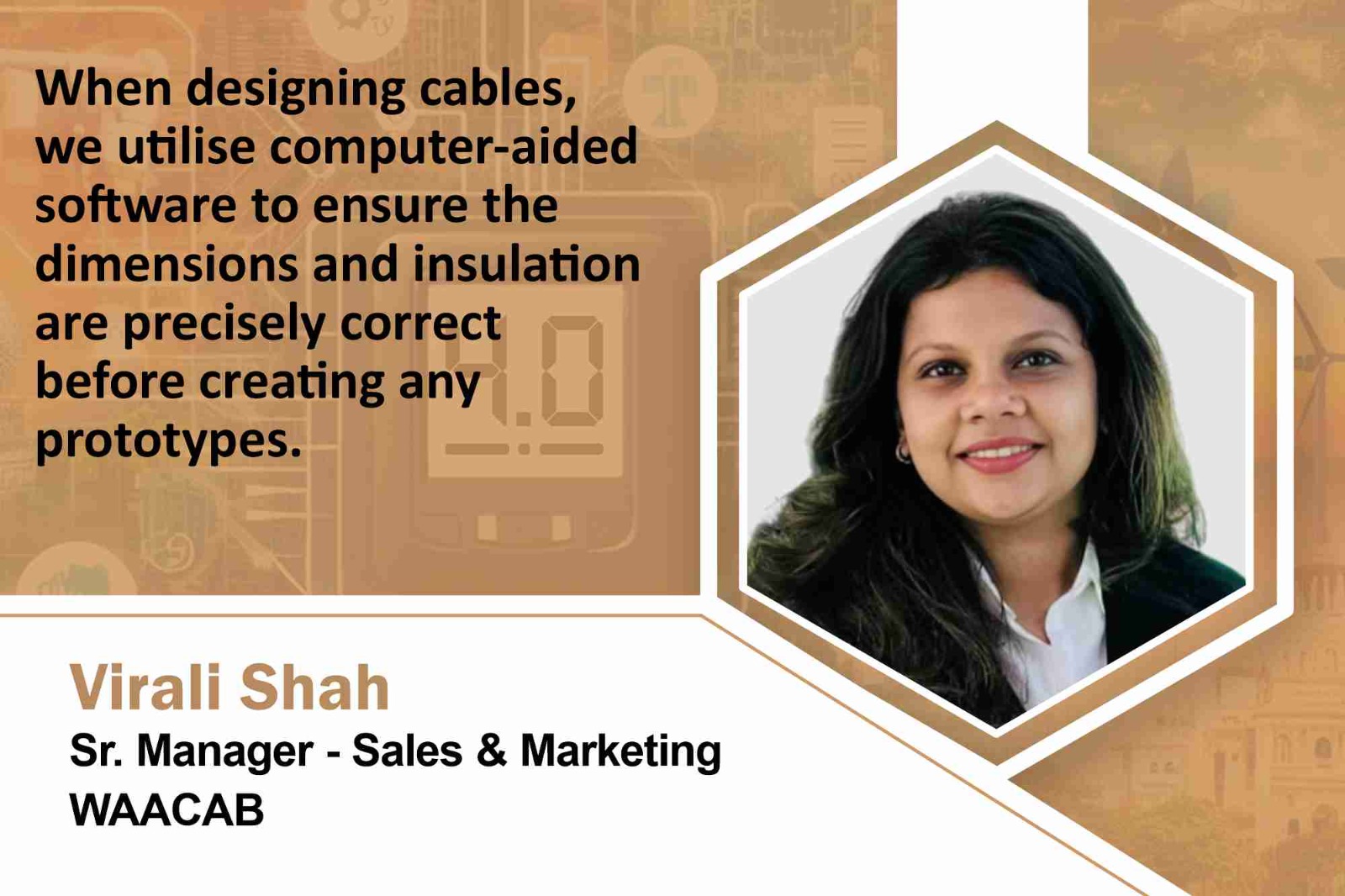WAACAB gearing up to meet railway electrification, EV charging demands
By Staff Report June 25, 2025 12:23 pm IST
By Staff Report June 25, 2025 12:23 pm IST

For rail networks, the firm focuses on delivering durable, high-performance power cables specifically engineered to meet the demands of traction and signalling systems, with safety and reliability at the forefront.
WAACAB is actively expanding its manufacturing capabilities to meet the rising demand for power cables in India. Virali Shah explains the company’s increased plant capacity and upgraded production lines, which aim to enhance both speed and product quality. The in-house R&D team is developing new cable types tailored to emerging needs in renewable energy systems, urban distribution and EV charging infrastructure. Let us hear from her.
How is WAACAB leveraging digital upgrades and eco-friendly materials to enhance cable quality and reliability?
At WAACAB, digital tools have improved every step of our process. When designing cables, we utilise computer-aided software to ensure the dimensions and insulation are precisely correct before creating any prototypes. This precision reduces trial and error, helping us deliver consistent, high-quality products. In our manufacturing facilities, automated controls and digital quality checks alert us to any issues early, ensuring production stays smooth and error-free. Even before a cable reaches the customer, we already know it meets our performance standards, meaning fewer surprises, faster deliveries and more reliable installations in smart-city and solar energy projects.
WAACAB follows a careful, step-by-step approach. Instead of overhauling our entire production process, we begin by focusing on the steps most prone to errors. By investing in targeted digital upgrades in these areas, we rapidly improve product quality and minimise waste without the significant cost of full-scale automation.
At the same time, we emphasise eco-friendly materials across our entire cable lineup. Whether we are producing house wires, submersibles, armoured lines, welding cables, earthing conductors or flexible cables, we use environmentally certified PVC compounds. These materials comply with essential standards, including BIS, ISO, IEC, RoHS, CE, and TÜV EN 50618, ensuring that we control production costs while meeting regulatory requirements for energy, construction, and sustainability.
How is WAACAB expanding its cable solutions to support railway electrification and electric vehicle (EV) charging infrastructure?
WAACAB is advancing its capabilities to meet growing needs in both railway electrification and EV charging infrastructure in India. For rail networks, we focus on delivering durable, high-performance power cables specifically engineered to meet the demands of traction and signalling systems, with safety and reliability at the forefront. In the EV charging space, our production lines are equipped to manufacture robust, high-current cables suitable for both AC and DC fast chargers, designed to withstand outdoor environments and continuous operation. By concentrating on scalable manufacturing and meeting all necessary quality and compliance standards, WAACAB positions itself as a dependable supplier for large-scale electrification efforts across India.How is WAACAB addressing rising material costs and stricter regulations while ensuring cable quality and safety compliance?
WAACAB is navigating several key challenges as the country’s electricity demand surges. Copper and aluminium, which make up more than half of cable production costs, are increasingly hard to source, and their prices fluctuate sharply. Copper alone accounts for 55–60 per cent of raw material costs, and recent global price swings have significantly squeezed margins in the wires and cables sector. The sheer variety of cables we manufacture, each with different specifications, makes it tough to scale smoothly. Maintaining consistent quality across multiple product lines requires flexible production systems and precise process control.
Additionally, our cables must meet safety and durability standards. It is expected to withstand high voltage, extreme environmental conditions and fire resistance requirements. This leads us to invest more in advanced materials and in-house testing to ensure products are both reliable and compliant. Finally, regulations regarding safety, environmental impact, and product quality are becoming stricter. To stay compliant with these regulations, we require frequent updates to certifications, equipment, and compliance systems, which adds time and cost to our operations.
******************************
We use cookies to personalize your experience. By continuing to visit this website you agree to our Terms & Conditions, Privacy Policy and Cookie Policy.